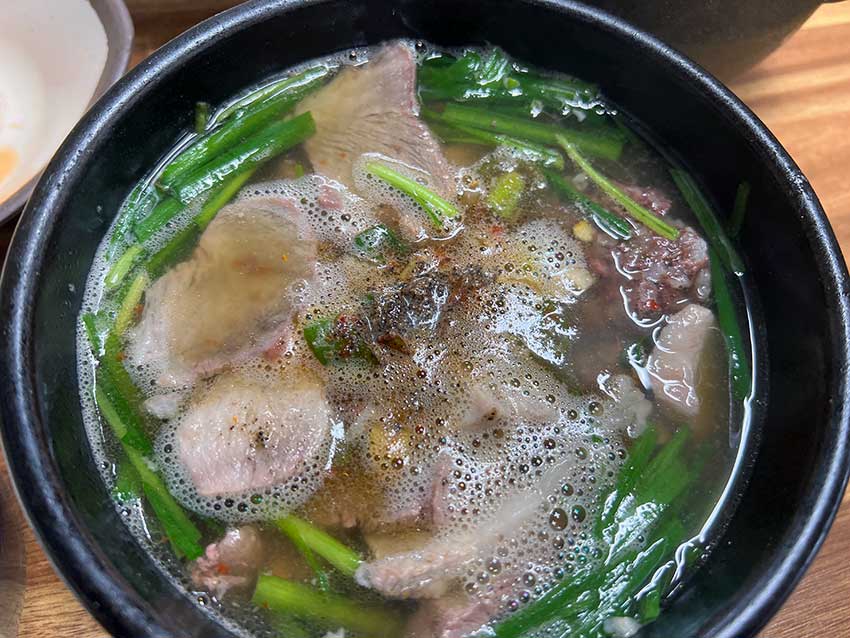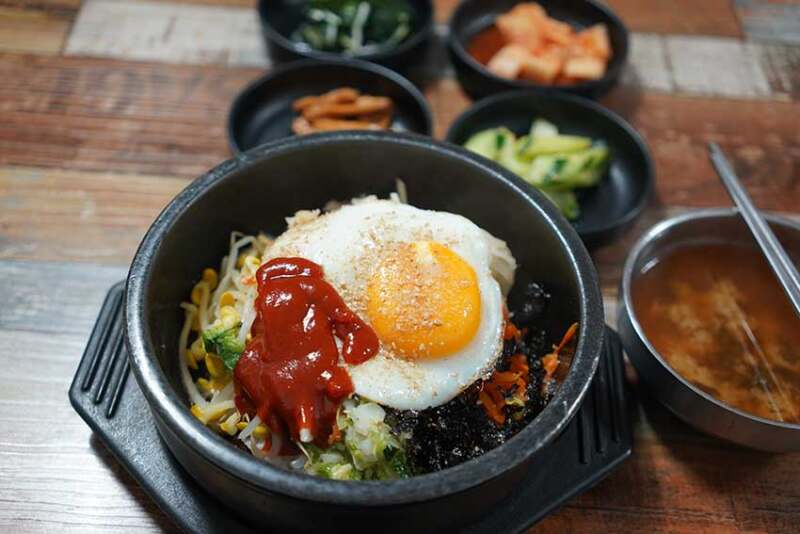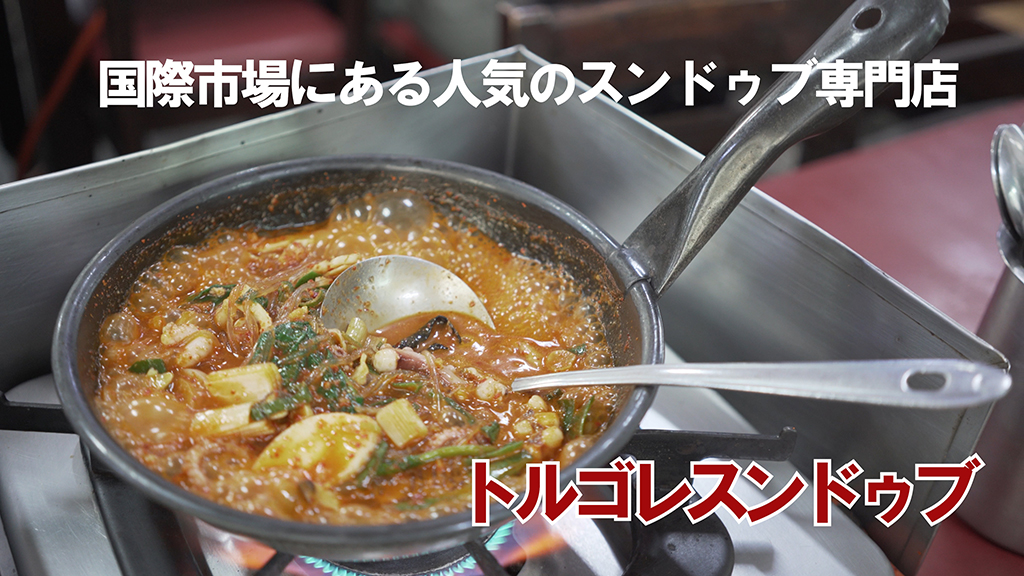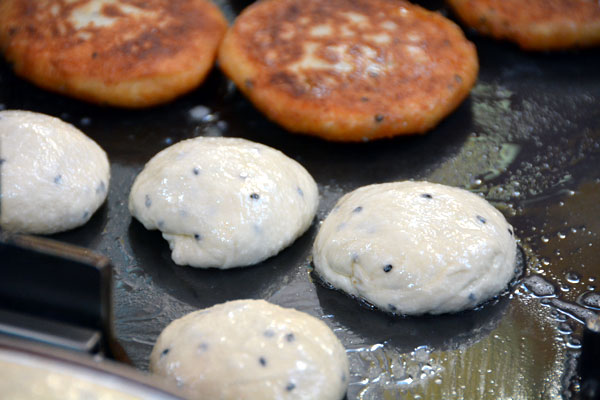After getting off at Jagalchi Station on Busan Subway Line 1, pass through the colorful stores in Nampo-dong Film Street and Gwangbok-dong, and reach Samseong Pharmacy in Pharmacy Street, you will meet Gukje Market, Busan’s representative traditional market.
The atmosphere is a bit cluttered compared to the glitzy streets we just passed, but the traditional market has a unique flavor of the common people. As you enter the alley, you’ll see a long line of food stalls. The white steam rising from the hot food gives off a wintry atmosphere.

Among the businesses, the first is the business of eating. No matter how difficult it is, it is human that cannot be overcome without eating, and it is the food business that can easily start a business with just one taste without a large income. The Gukje market food alley reminds us once again of the absolute value of ‘human beings die if they don’t eat’.
When the economic situation improves, the eating culture of how to eat in what environment develops, but this place is still far from such decent food and drink. Regardless of whether the person coming and going sees it or not, if you crouch down on a small chair prepared on the street, the seat becomes a table and warm food is quickly thrown into your mouth with chopsticks. Then, he kindly gives a bite to the person next to him.
represent a commoner food culture
Eating gracefully while maintaining manners is an example performed in an upper society that has already overcome basic problems. The food of the common people who need to solve their hunger right now is just food to satisfy their hunger. At the well-prepared table of high-end restaurants, you should be conscious of interpersonal relationships and dignity, but the eating and drinking activities here relieve such burden, so you can fully enjoy your freedom. It is the taste of hometown and the atmosphere of hometown that has been forgotten for a long time.
Soondae, tteokbokki, Kimbab kimbap, sweet potato, fish cake, fried food, sikhye, pumpkin porridge, red bean porridge, mung bean porridge and gil coffee…
Gukje Market’s shabby store is a traditional Korean food that is disappearing due to fast food and snacks. You can simply satisfy your hunger from a few hundred won below to a few thousand won above.
Overcoming the 1950 Korean War and the difficult times of industrialization, Gukje Market Food Alley was a place that could satisfy the hunger of daily workers, housewives who went shopping, and unemployed people who wanted to find jobs. Compared to those difficult times, there are not many customers now, but sometimes lovers who have visited the romance of youth and students with empty pockets continue to visit.
Steam rises from warm food over the arms of young people crouching in small chairs and eating this and that, warming the winter.
A cultural yard of ordinary people transcending time and space
When you walk around in a large traditional market like Gukje market, you feel the flow of space that flows very slowly, unlike the violently changing outside.
Considering that the products of large stores that are constantly changing are running toward the cutting edge, the products here are worn out like clothes that fit the body, but you can feel comfortable. Old stores that deal with clothing repair, shoe repair, watch repair, used furniture, shoes, clothing, mechanical hardware, stationery, eyeglasses, lighting and wallpaper are taking root in every alley in its old shape. As far as I remember, these were at the site as they were ten, twenty, or thirty years ago.
Started from the dotttegi market after liberation

Gukje market is a place where a large vacant lot was formed when Japan emptied residential areas and shopping malls concentrated here in the center of Busan for fear of Allied air strikes during the Pacific War. With the liberation and the presence of the U.S. military, a market was naturally established in the vacant lot, but the only items that could be said to be products were things left by the Japanese and clothes, food, and daily necessities from the U.S. military.
At that time, people called this place Dotegi Market, which means “living whole.” It is derived from the fact that retailers or general buyers buy the whole thing brought by one person. In other words, the goods were traded preciously and the amount was not that large.
represent the way the tough common people live
During the Korean War, Gukje market was a living base for refugees who started again empty, and smuggled goods such as cloth, cosmetics, watches, and jewelry were traded during the Liberal Party. From 1950 to 1968, shanty shops, which had been filled with four large fires, were in ruins, but they have been built since the construction of a concrete building in 1970.
Let’s pile up the clothes and come! The act of soliciting people saying, “Choose whatever you want!” is now disappearing, and the Gukje market atmosphere, which showed Busan’s powerful living power, is gradually becoming a thing of the past. As Busan’s commercial districts have diversified and transportation centers have been dispersed to areas such as Dongnae and Seomyeon, many people seem to visit Gukje Market in search of the atmosphere of the old market, although Gyeonggi is not as good as before.
| Basic information | |
| Name | 국제시장 먹자골목 Gukje Market Food Alley |
| Address | 부산시 중구 창선동2가 Changseon-dong 2-ga, Jung-gu, Busan |
How to go:Get off at Jagalchi station on subway line 1 and take exit 7, cross the crosswalk and go straight to Lotteria. Turn left at the corner there and you will see PIFF square and go straight past PIFF square.There is an arch next to Seimyung pharmacy and the entrance to Arirang street is Gukje market food alley.

















Add comment